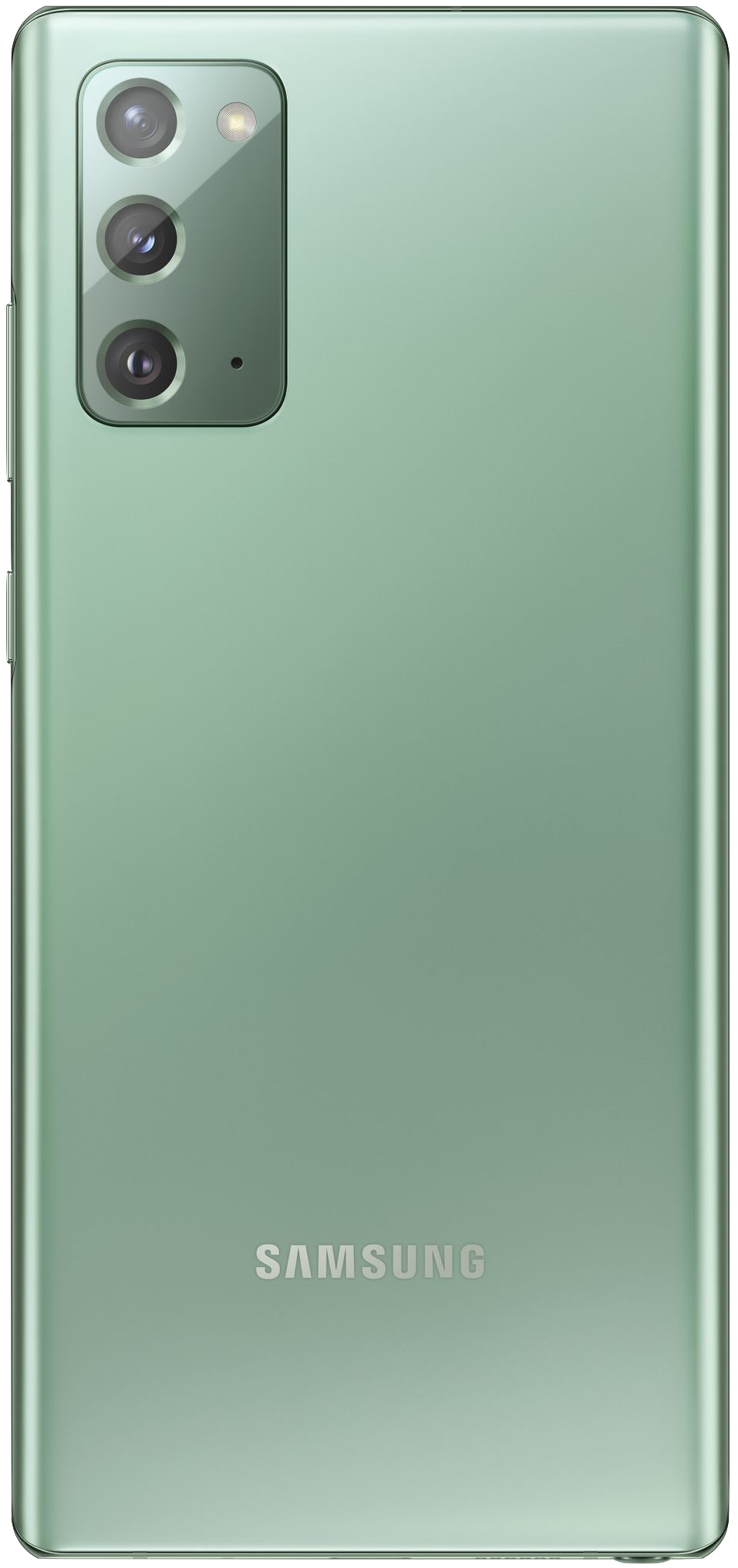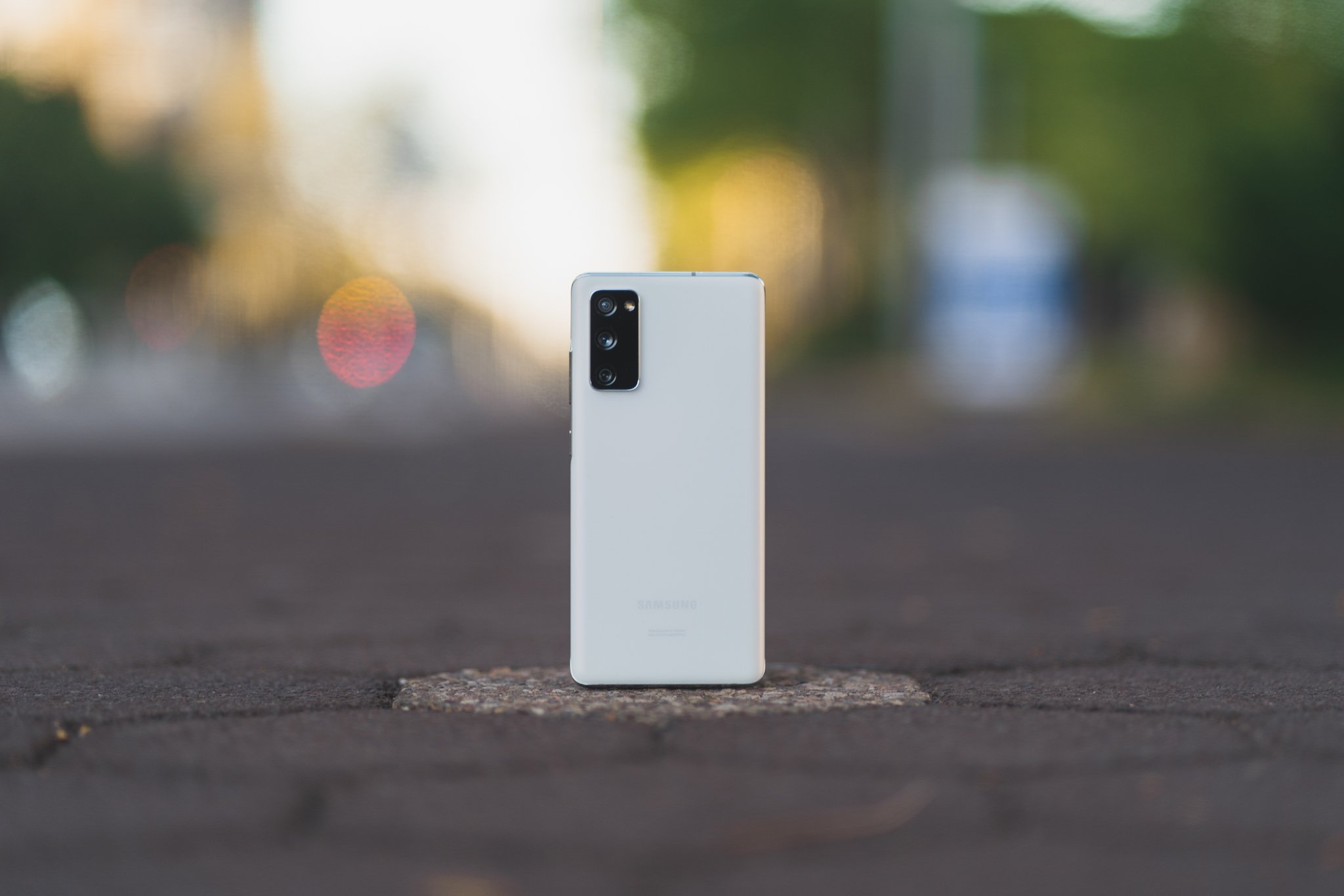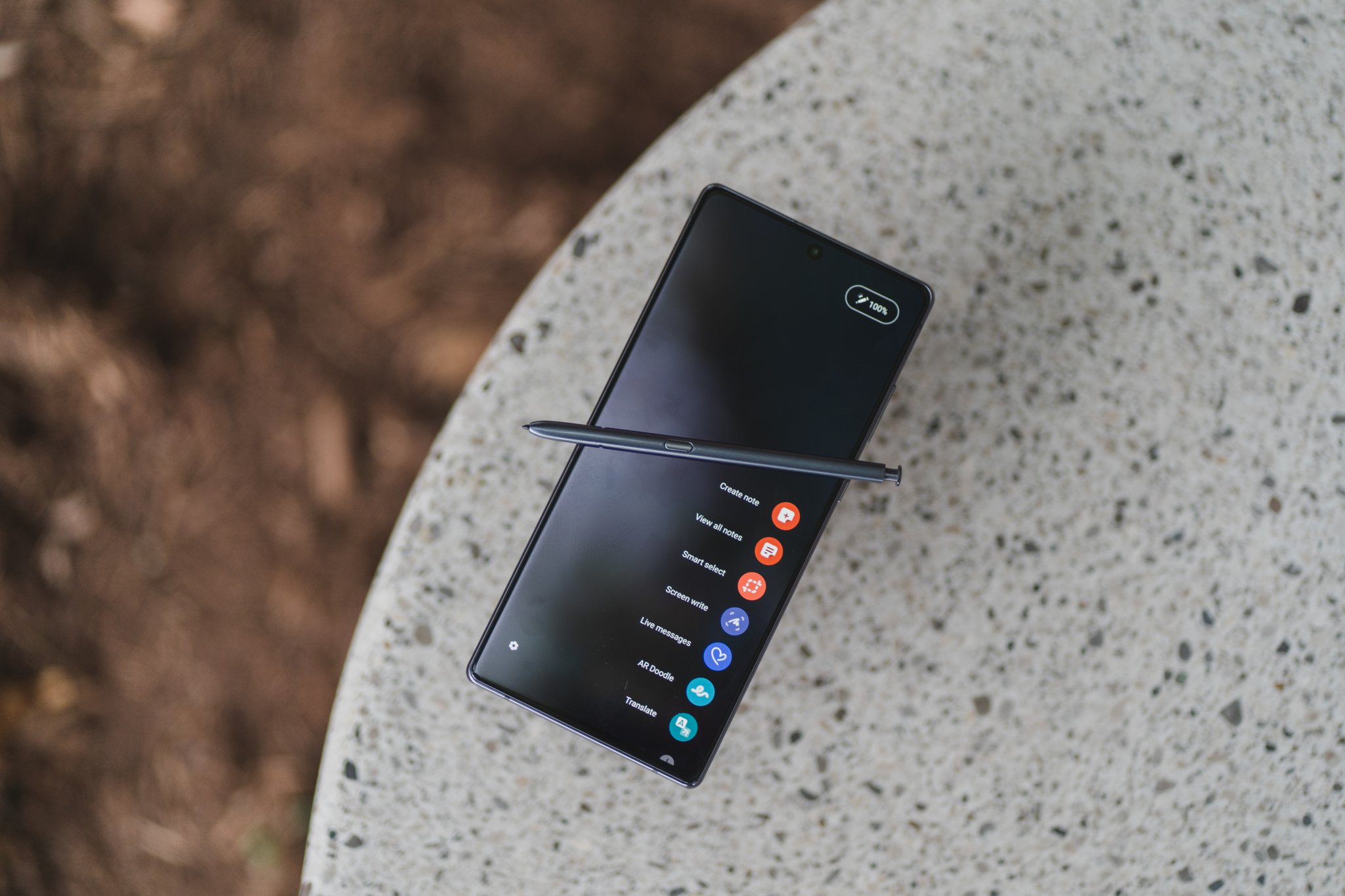A phone for everyone
Samsung Galaxy S20 FE
Pros
- Incredible value
- Three great, versatile cameras
- Gorgeous flat 120Hz display
- All-day battery life
- Three years of guaranteed software updates
Cons
- No S Pen capabilities
- No 8K video
The Galaxy S20 FE packages the entire core Samsung experience into a surprisingly affordable flagship with a plastic body and a flat display. It offers a 120Hz display, three great cameras, all-day battery life, and 5G connectivity.
Smart stylus
Samsung Galaxy Note 20
Pros
- S Pen with wireless controls
- 8K video capture
- Display is flat and vibrant
- All-day battery life
- Three years of guaranteed software updates
Cons
- Display is only 60Hz
- More expensive
By comparison, the Galaxy Note 20 is priced a bit steep, but it offers a nearly identical experience with a faster processor and S Pen support. Like the S20 FE, it's guaranteed to receive at least three years of continuous software updates.
Samsung has developed a reputation in recent years for its stunning hardware designs, typically utilizing a combination of metal and curved glass for its flagship phones. This year, however, we've started to see a shift back towards plastic in the company's "affordable flagship" category. As it turns out, plastic is just fine when done well, especially when paired with two of the best Samsung phones in late 2020 — the Gaalxy S20 FE and the Galaxy Note 20.
Galaxy S20 FE vs. Galaxy Note 20 A lot in common
The Galaxy Note 20 was the first phone in Samsung's flagship lineup to move from curved glass back to a polycarbonate (plastic) design, and while I was apprehensive about the change at first, getting it in my hands immediately put me ease. The Note 20 still feels extremely solid and well-built, and the flat display is a breath of fresh air for anyone who struggled with accidental touches on Samsung's curved displays in the past.
The subsequently released Galaxy S20 FE features the same plastic design and flat display, though it comes in a few more fun colors. Both phones are IP68 water- and dust-resistant, and feature standards like wireless charging and in-display fingerprint sensors. From a hardware standpoint, these two phones are nearly identical, save for a slight difference in physical size thanks to the Note 20's larger display.
Internally, the phones are similar, as well. The Note 20 features the slightly newer Snapdragon 865+ processor (which clocks a bit higher and renders graphics faster), along with more RAM, but both phones offer 128GB of storage, and only the S20 FE offers microSD expandability. The S20 FE is also the only one of the two with a 120Hz display — like the Note 10 before it, the Note 20 maintains a more modest 60Hz refresh rate.
| Category | Galaxy S20 FE | Galaxy Note 20 |
|---|---|---|
| Operating System | Android 10 | |
| Display | 6.5 inches, 20:9 aspect ratio, 2400x1080 (407 ppi) resolution, Super AMOLED | 6.7 inches, 20:9 aspect ratio, 2400x1080 (393 ppi) resolution, Super AMOLED Plus |
| Processor | Qualcomm Snapdragon 865 | Snapdragon 865+ |
| Memory | 6GB RAM | 8GB RAM |
| Storage | 128GB | 128GB |
| Expandable Storage | Yes (up to 1TB) | No |
| Rear Camera | 12MP, ƒ/1.8, 1.8μm (wide) 12MP, ƒ/2.2, 1.12μm (ultra-wide) 8MP, ƒ/2.4, 1.0μm (telephoto) |
12MP, ƒ/1.8, 1.8μm (wide) 12MP, ƒ/2.2, 1.4μm (ultra-wide) 64MP, ƒ/2.0, 0.8μm (telephoto) |
| Front Camera | 32MP, ƒ/2.2, 0.8μm | 10MP, ƒ/2.2, 1.22μm |
| Battery | 4500mAh | 4300mAh |
| Water Resistance | IP68 | IP68 |
| Dimensions | 159.8 x 74.5 x 8.4mm | 161.6 x 75.2 x 8.3mm |
| Weight | 190g | 194g |
Of course, the software experience on both phones is nearly identical. Each runs Android 10 with Samsung's One UI 2.5 software overlay, which offers powerful features like DeX for running your phone in a desktop-like experience using an external monitor. The biggest difference between the two is the Note 20's S Pen. This pressure-sensitive stylus allows you to take notes or draw on your screen, and can even be used to control your phone wirelessly using air gestures.
These phones are extremely similar in every way but their price.
Both phones feature the same primary camera, along with an ultra-wide sensor and a telephoto camera capable of reaching up to 30, though the S20 FE packs a native 3X telephoto lens, whereas the Note 20 uses Samsung's Hybrid Optic Zoom technology. The shooting experience is extremely similar on each phone, with a myriad of manual controls for fine-tuning your shots, but one perk I particularly enjoy about the Note 20 is the ability to use the S Pen as a remote shutter.
In case it isn't clear, these phones are extremely similar, from cameras to performance, battery life, and hardware features. They trade blows in minor features like S Pen support, a high refresh rate, and microSD expandability, but ultimately the biggest difference is the price. The Galaxy S20 FE costs a mere $700, and has already gone on sale for just $600. By contrast, the Note 20 launched at $1,000, with few bonus perks save for the S Pen.
If you're a longtime Galaxy Note fan who loves using the S Pen, the Note 20 is the obvious choice, but for all else, it's hard to justify spending the extra money over the S20 FE, which offers just about every other feature and benefits from some newer hardware bonuses. In fact, the Galaxy S20 FE currently ranks as our best Android phone overall, thanks to its unbeatable value. I'm a big fan of both devices, but the choice is clear.
A phone for everyone
Samsung Galaxy S20 FE
A top-tier phone at a great value
The Galaxy S20 FE packages the entire core Samsung experience into a surprisingly affordable flagship with a plastic body and a flat display.
Smart stylus
Samsung Galaxy Note 20
How much do you really want the S Pen?
By comparison, the Galaxy Note 20 is priced a bit steep, but it offers a nearly identical experience with a faster processor and S Pen support.
from Android Central - Android Forums, News, Reviews, Help and Android Wallpapers https://ift.tt/31DXiqw
via IFTTT





Aucun commentaire:
Enregistrer un commentaire